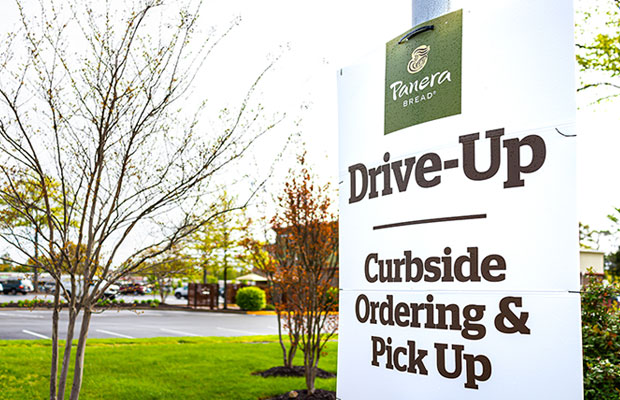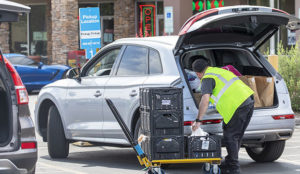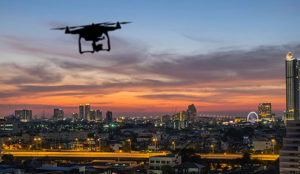Curbside service is one of the more popular strategies that businesses and consumers now use to navigate the ‘new normal’. They can order online, show up at a business, pick up their items, and be on their way. Ideally, it’s a contactless, convenient experience for all involved.
“Curb demands from multiple users have increased over the past few years,” Chrissy Mancini Nichols, a mobility consultant with Walker Consultants, told the E-Commerce Times. “People want to travel beyond private vehicles, and the curb is where there’s a convergence of competing uses, such as ride apps [like] Uber and Lyft, bicycles, dockless scooters, transit and private cars.”
The pandemic raised awareness and interest in curbside pickup, but it’s a method of getting goods into consumers’ hands that was gaining popularity even before the virus hit.
“Curbside pickup had been growing prior to COVID-19, due to the increase in demand for commercial goods and food delivery resulting from online and app purchases,” explained Nichols.
“Curbside pickup is popular because it’s both a convenient and a fast way to shop. People can place an order online and pick it up without having to get out of their car or go in a store. In addition, with the growth in food delivery, it’s not only customers but delivery drivers that have increased the need for curbside pickup,” she added.
Curbside service is also a way to use all the parking spaces that, with the pandemic, are often empty.
“With the ongoing response to the COVID-19 pandemic, restaurants and retail shops need flexibility in how they offer their products,” said Nichols. “Right now, businesses need less long-term parking and more space for short-term pickup to help them accommodate changing consumer needs and increased demand for pickup.
“These short-term pickup spaces for customers and delivery vehicles will continue to remain a vital lifeline for businesses as they navigate reopening and beyond.”
Painless Pickups
For curbside pickup to be successful, it has to be as quick and easy as possible for consumers, and a large part of that ease of use involves adequate planning and management.
“There are several elements to consider in planning for curbside pickup,” explained Nichols. “First, cities must work with businesses to adequately plan for the necessary space to accommodate needs and demand. Also, businesses must create processes that streamline pickup from customers. Then there’s the added element of the need to accommodate pickup demand from delivery drivers.”
Determining the best areas for service at the curb is also important.
“For cities planning curbside pickup spaces, the best areas for on-street customer pickup are commercial cores, neighborhood streets, and main streets — places with on-street parking,” said Nichols. “Adequate pickup space should be considered on a block-by-block basis, depending on the adjacent land uses.”
Ultimately, the more fluid and seamless the curbside experience is, the more satisfied customers will be.
“Customer expectations for a seamless curbside pickup experience will create winners and losers in retail,” Scott Starr, area vice president, retail for LivePerson, told the E-Commerce Times.
“The winners will be those that offer safe, coordinated, and clear fulfillment without requiring customers to exit vehicles. The losers will be those that continue to leave customers confused in their parking lots, struggling to engage associates to fulfill their orders.”
Automation can help to a great degree in making the experience of curbside pickup seamless and satisfying.
“It’s important for businesses to automate their curbside experience on a mobile-native channel that customers already use, like SMS, iMessage, Facebook Messenger, or WhatsApp,” explained Starr.
“From these messaging apps, customers can initiate fulfillment conversations upon arrival by simply scanning a QR code on a sign or punching in a short number,” he added. “These messaging channels are automated with chatbots, which help save associate time by greeting customers, collecting info like order number and vehicle make and model, and even providing status updates.”
An important component of any curbside service offering is clear and regular communication.
“Unlike phone or Web-based solutions, messaging conversations persist throughout order fulfillment and live on in conversation threads, creating opportunities to further engage customers with automations for feedback surveys, follow-up offers, and customer service inquiries,” said Starr.
“By adopting conversational AI solutions for curbside pickup, brands can refine the customer experience, reduce wait times, and remove friction, all while increasing efficiency and reducing costs.”
Curbs of the Future
Though at the moment it’s often associated with the pandemic, curbside pickup is likely to remain a part of the future retail landscape. The trend is for consumers to expect curbside pickup because they value its ease and convenience, and many businesses will likely continue to offer it as an option.
“Curbside pickup is not a trend that is going away anytime soon,” Alex Soncini, co-founder and head of global accounts for Vtex, told the E-Commerce Times.
“The needs of customers will evolve, and businesses must be able to accommodate if they want to minimize disruption. If they continue to keep inventory levels up and make it easy for consumers to order online, they’ll be able to create a successful order fulfillment loop from their online store,” he added.
In fact, the practice of curbside pickup might actually start to alter the infrastructure of cities themselves, as buildings and parking spaces evolve to accommodate new methods of shopping.
“The curb is one of the most valuable assets in a city,” said Walker Consultants’ Nichols, adding, “Just consider how the demand has shifted in the past few years from solely private vehicle parking to pick up and drop off for ride apps, commercial delivery, and bike and scooter parking. Cities have the opportunity to monetize the curb and charge fees in exchange for dedicated space.
“Curb monetization and access fees can then diversify cities’ parking and transportation revenue portfolios to cover any lost parking revenue resulting from decreased parking demand. Curb monetization can also cover administrative costs and fund investments in mobility infrastructure that can in turn provide greater access,” Nichols concluded.

























































Social Media
See all Social Media